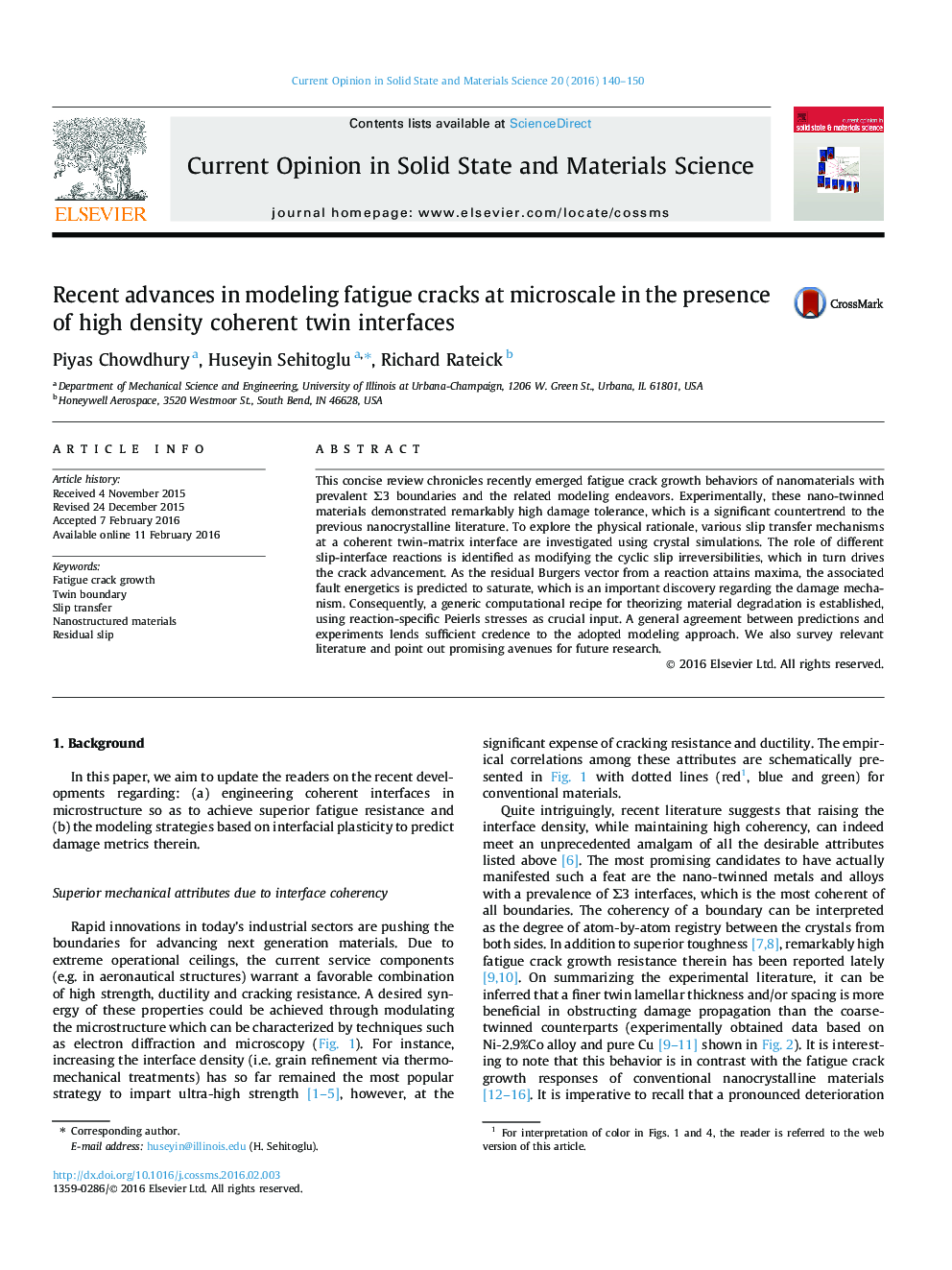| Article ID | Journal | Published Year | Pages | File Type |
|---|---|---|---|---|
| 1555367 | Current Opinion in Solid State and Materials Science | 2016 | 11 Pages |
•Experimentally, nano-twinned alloys demonstrate superior fatigue resistance.•Details of slip-twin boundary reactions are examined atomistically.•Energy barriers for slip transfer mechanisms are quantified.•Friction stresses for reactions are predicted using the above energies.•Dislocation based fatigue crack growth model is proposed with atomistic input.
This concise review chronicles recently emerged fatigue crack growth behaviors of nanomaterials with prevalent Σ3 boundaries and the related modeling endeavors. Experimentally, these nano-twinned materials demonstrated remarkably high damage tolerance, which is a significant countertrend to the previous nanocrystalline literature. To explore the physical rationale, various slip transfer mechanisms at a coherent twin-matrix interface are investigated using crystal simulations. The role of different slip-interface reactions is identified as modifying the cyclic slip irreversibilities, which in turn drives the crack advancement. As the residual Burgers vector from a reaction attains maxima, the associated fault energetics is predicted to saturate, which is an important discovery regarding the damage mechanism. Consequently, a generic computational recipe for theorizing material degradation is established, using reaction-specific Peierls stresses as crucial input. A general agreement between predictions and experiments lends sufficient credence to the adopted modeling approach. We also survey relevant literature and point out promising avenues for future research.
Graphical abstractFigure optionsDownload full-size imageDownload as PowerPoint slide
